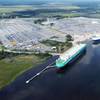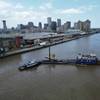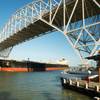Cruise Ship Terminal Trends in Asia-Pacific Region
Cruise Shipping Asia-Pacific interviews Melvin Vu of SATS-Creuers Cruise Services on trends in port development & management.
What do you see as some of the current trends in terminal design and operation?
Melvin Vu: Parallel to the strong overall growth of the cruise industry in the region, cruise lines are significantly adding to the vessel capacity and are deploying bigger ships here. It is safe to say that various destinations in Asia are fast becoming integral to cruise itineraries — as such, the burgeoning cruise demand is increasingly shaping and influencing terminal design and operations.
What do you see as some of the current trends in terminal design and operation?
MV: Parallel to the strong overall growth of the cruise industry in the region, cruise lines are significantly adding to the vessel capacity and are deploying bigger ships here. It is safe to say that various destinations in Asia are fast becoming integral to cruise itineraries — as such, the burgeoning cruise demand is increasingly shaping and influencing terminal design and operations.
What are some of the major considerations when designing a new port (i.e., turnaround or transit port, seasonality of use, multiple uses such as cargo and passengers, etc.)?
MV: There should be a three-pronged approach comprising:
Seaward side — The terminal will have to ascertain what sort of business it wants to embark on – Will the terminal be purely for cruise ships? Or will it want to accommodate ferries, yachts etc. With that in mind, the terminal will then have to make the necessary concessions.
Terminal side — Would the terminal be primarily for transits or turnarounds? For example, if the terminal is used mainly turnarounds then large spaces is required to lay down and sort the luggage. The terminal must have proper security processes too.
Landward side — Sufficient space is important to accommodate transport options for disembarking passengers, whether it be a designated space and queuing area for taxis, waiting areas for private cars and vans, as well as coach bays.
What are some of the operational challenges facing terminal operators as the Asia-Pacific region grows as a cruise market?
MV: The fundamental challenge is the optimal utilization of terminals and berths. Compared to Europe and the USA, Asia-Pacific is still an emerging cruise hub so the terminals in the region have to work together to create a meaningful itinerary for the cruise lines.
We are highly encouraged by the growing demand so the challenge now would be for terminal operators to develop the capabilities and resources to handle larger ships with increased passenger capacity. Once cruise lines see that we are able to cater to this demand, it will build their confidence to deploy more ships to Asia.
The annual Cruise Shipping Asia-Pacific conference program is available here.










